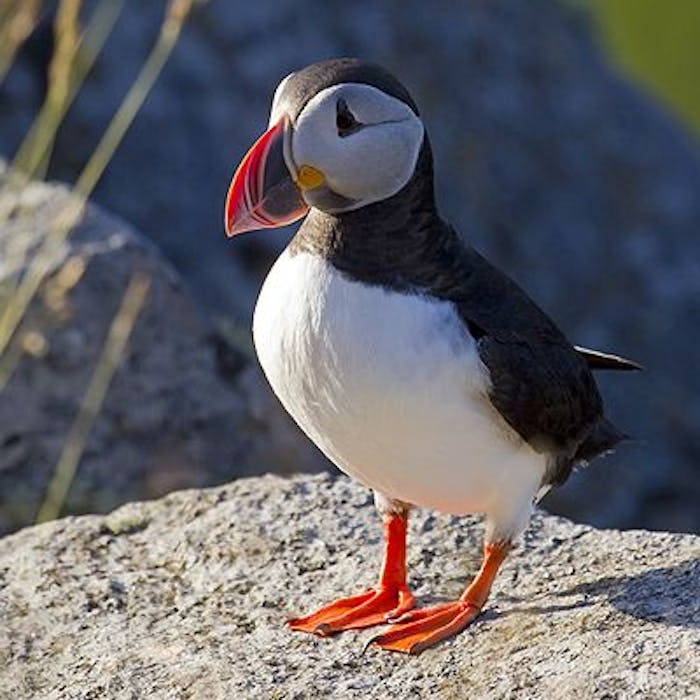
The Puffin - popular and appealing seabirds
The Atlantic puffin is one of the most recognisable and popular of Britain's seabirds, with its bright orange beak and webbed feet. It breeds in the North Atlantic and the adjacent Arctic Ocean, with a significant population to be found around Britain and Ireland, where it is the second most abundant breeding seabird.
Though prolific, the birds are often a challenge to see as they prefer undisturbed and unthreatening spots on offshore islands and in accessible cliffs.
Those from north western Britain disperse widely outside the breeding season between April and July, going as far away as Newfoundland in the west and the Canary Islands to the south. In contrast, most of those from colonies in eastern Britain remain within the North Sea.
The puffins usually nest underground in burrows dug in the soil of offshore islands, but may do so on cliffs amongst boulder screes. The puffins like to live in large groups, and colonies are generally established where the nesting birds are safe from mammalian predators.
As well as flying in dramatic wheels above the colonies, they like to strut around and simply go bobbing in the water. Their short wings are adapted for swimming with a flying technique underwater.
Puffins form long-term pair bonds or relationships. The female lays a single egg, and both parents incubate the egg and feed the chick. The incubating parent holds the egg against its brood patch with its wings. Chicks are fed on small fish that the adult amusingly carries cross-wise in its beak. In the UK the commonest prey is the lesser sandeel, followed by sprat, herring and a wide range of small juvenile fish which are caught underwater.
Some of the best places to see puffins are in the Isles of Scilly; Lundy Island off the North Devon Coast; Farne Islands off the Northumberland coast; Bempton Cliffs, Yorkshire and Skomer Island, Pembrokeshire.
Further Reading
Links to external websites are not maintained by Bite Sized Britain. They are provided to give users access to additional information. Bite Sized Britain is not responsible for the content of these external websites.
